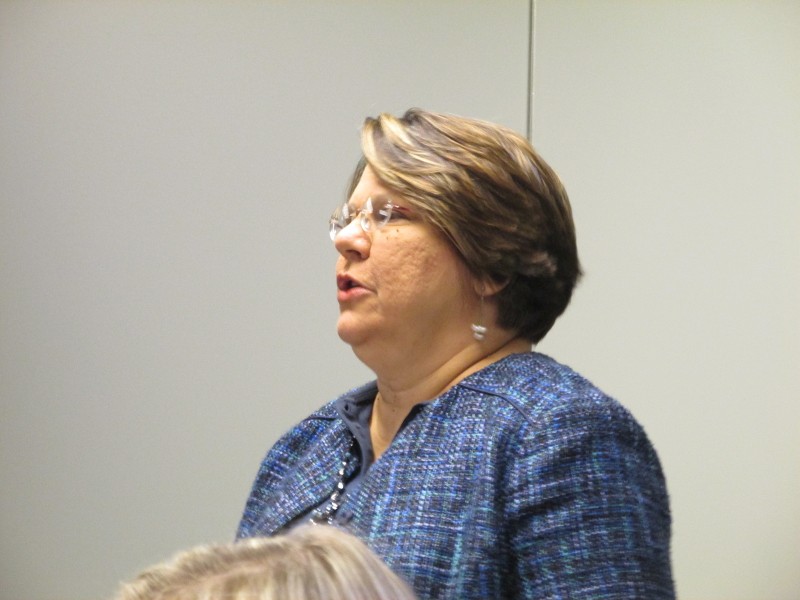GAINESVILLE – The Director of Gainesville’s Department of Water Resources has a 10-year financial plan for her department’s future, plus a couple of simplifications for the billing process that she feels customers will like.
Specifically, those latter two items are changing the way monthly water usage is calculated and, secondly, bringing stability and predictability to future rate increases.
Linda MacGregor told members of the Gainesville City Council at their work session Thursday morning, “Today I am presenting to you a plan that I think will help us maintain our good status into the future.”
MacGregor said, “(We have) $650-million worth of water assets that continue to grow in age, number, value and complexity; so there is nothing about it that is getting more simple, it’s getting bigger and more complicated.”
Replacing aging infrastructure, modernizing treatment processes and ensuring reliable services are costs that continue to grow according to MacGregor, but because they are done out of public sight most of the utility’s 55,000 customers are unaware of their existence.
“It’s not very exciting, there’s nothing new, it’s not really shiny, but if we don’t do that, then some little tiny thing can keep something really big from working,” MacGregor said.
In the past, MacGregor explained, water rate increases have been staccato, often complicating customers’ budget plans.
So getting away from unpredictable increases and establishing a consistent rate of increase is something Mayor Danny Dunagan applauds. “It’s consistent,” Dunagan said of MacGregor’s proposal. “I remember one year we had a 4.5-percent increase and we got crucified.”
That kind of sudden increase can force many family budgets back to the drawing board. Under MacGregor’s new plan water rates for the next decade will increase at a steady and consistent rate, a rate of 1.9-percent.
The second item customers will notice in their monthly bill is a changeover from calculating water use from cubic-feet to gallons.
“Instead of charging (for) water by the cubic-foot, we’re going to charge water by the gallon,” MacGregor stated. “Once we make the switch…it will be easier for everyone to understand forever.”
Also included in the plan is what MacGregor terms a “Lifeline Rate” to address affordability for residential customers and covers the first 2000-gallons of use each month. “The Lifeline Rate is a lower rate…that allows residential customers to meet basic needs at a lower cost.”
Additionally, a change is coming in the department’s “H2O (Help 2 Others) Program”, a program that offers financial assistance to those unable to pay for emergency repairs. That voluntary program has historically been funded by water customers who choose to round up their monthly bill to the next dollar. Going forth all customers will be enrolled in the program automatically but can opt-out if they choose to do so by contacting the Water Resources Department.
“It’s a special fund that the Salvation Army helps us administer to help people that are having trouble paying their bill,” MacGregor explained.
Dunagan commented, “The Lifeline structure is something that I really appreciate; I think that it’s going to help a lot of people. I’ve talked to too many people that have had…water leaks between their meter and the house and they couldn’t afford the two or three thousand dollars it was going to cost to fix it.”
If approved by the city council at its voting session Tuesday evening the new measure will not take effect for at least a year. “The whole ordinance, all of these things, would go into effect on January 1, 2022,” MacGregor said. “That gives everybody fifteen months to kind of settle in.”
Click here to view MacGregor’s PowerPoint Presentation to the city council.









